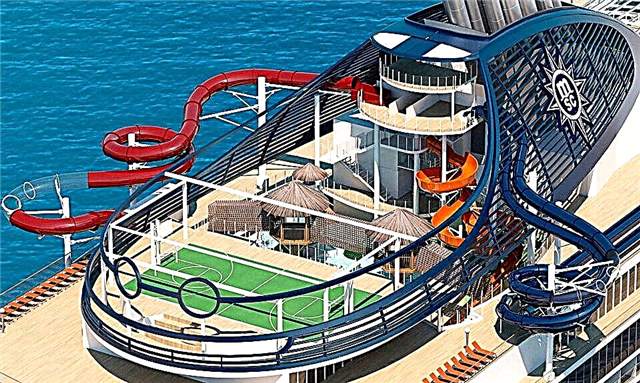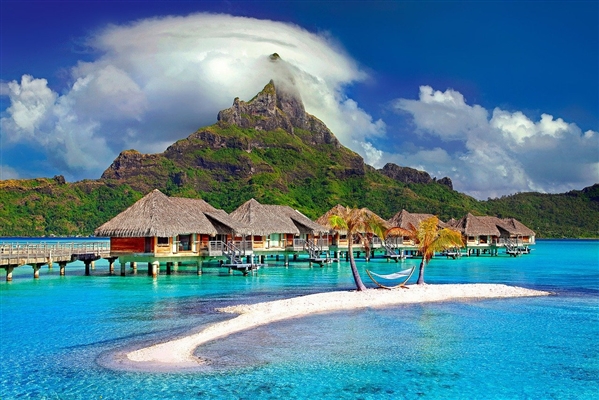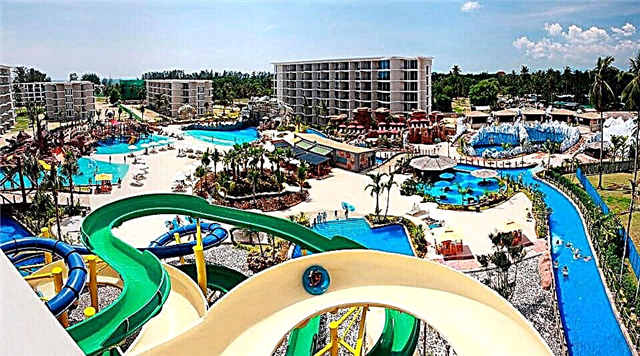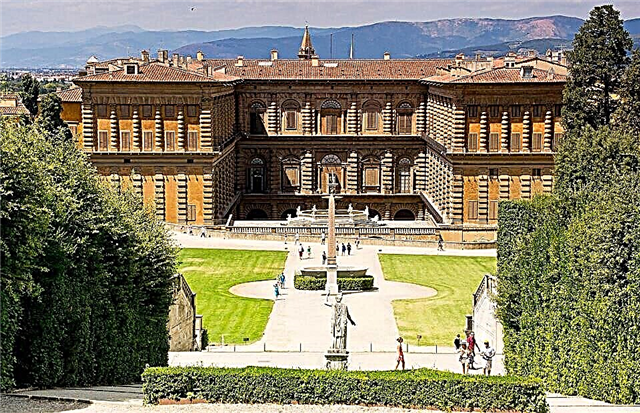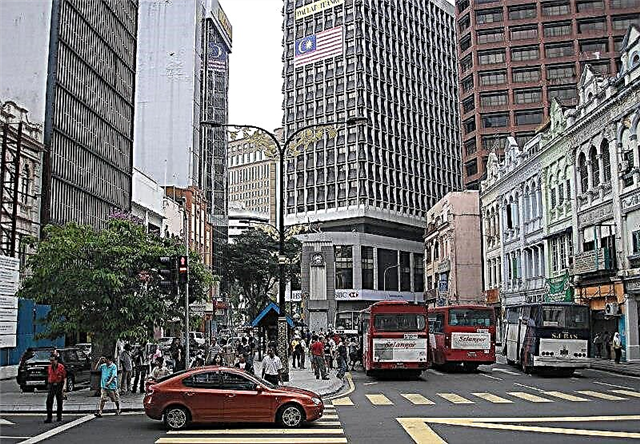Location: Portugal, Sintra
Architect: Wilhelm Ludwig von Eschwege
Foundation date: 1838 g.
Coordinates: 38 ° 47'15.6 "N 9 ° 23'25.5" W
Content:
Pena Palace is a fantastic medieval-style palace perched on a hill above the city of Sintra. The palace is a former summer royal residence, which was built on the site where an abandoned monastery was located..

General view of the palace
Today, the Pena Palace is a national monument and a cultural religious adornment of Portugal. Thousands of tourists come here every year who want to personally see this monument, recognized as a UNESCO World Heritage Site, which has been declared one of the seven wonders of Portugal.
History of the Pena Palace
The history of the palace begins in the Middle Ages. It is believed that then the appearance of the Virgin Mary occurred on the hill, after which the chapel of Our Lady of Pena was built in that place. King Manuel I loved this place very much, and on his order a monastery was built and added to the temple, and for several centuries in a row it was a quiet place where dozens of monks worshiped and meditated. In total, a maximum of 18 monks lived here. The great earthquake of 1775 destroyed the monastery, turning it into ruins, but the chapel miraculously survived. This place is deserted, and no one has visited it for almost a century. However, in 1838, the ruins were visited by the young Prince Ferdinand, who was struck by the beauty of even such a dilapidated structure.

View of the palace from the south
The prince acquired these lands, including the neighboring castle of the Moors, in order to build a castle for the Portuguese royal family. Mining engineer Baron Wilhelm Ludwig von Eschwege from Germany was invited for the construction.... He traveled a lot and designed a palace in a romantic style, using architectural elements from different countries. A variety of exotic mix of styles included: eclectic style, neo-gothic style, neo-renaissance style, as well as pseudo medieval fragments.
Prince Ferdinand and Queen Mary II took an active part in the creation of the palace project, made proposals for its design and symbolism. At the suggestion of the royals, vaulted arches and lavishly beautiful windows were added to the main façade. After Ferdinand, the palace became the property of Alice Hensler, his second wife. She, in turn, sold the Pena Palace to King Louis, who was busy rebuilding it, so that the royal family could visit it.

View of the palace from the west
After the restoration of the palace, the king and his family actually came to this luxurious castle quite often. The completion of construction work took place in 1854. This luxurious palace, however, did not serve as a royal residence for long.
In 1910, the last queen of Portugal, Amelia, spent her farewell evening in this palace, and then left the country forever. The Republican Revolution led to the fact that the palace was declared a national monument and opened to everyone as a museum. Over the long years of existence, the red and yellow colors of the facade of the palace have worn off, and the palace looked gray for many years. Towards the end of the 20th century, the palace was repainted and the colors returned, which caused alarm among many Portuguese, as they did not suspect that the palace was once painted with such bright colors.

Tower view
Palace architecture
The interior of the Pena Palace has been preserved as it was after the departure of Queen Amelia. The complex consists of four parts: the base of the palace, with the surrounding walls with locks and a drawbridge; an old monastery and a tower with a clock, rebuilt after the destruction; the courtyard in front of the chapel, decorated with Moorish arches; the palace area and the bastion, cylindrical in shape with interiors presented in the cathedral style.
Many fragments have survived from the original buildings, such as the chapel, the monastery dining room and the sacristy. These buildings are surrounded by a wide terrace, which offers the best view of the palace, suitable for viewing its architecture.

Palace gate view
An interesting attraction of the palace complex is the clock tower from 1843. The tower's sundial activates a cannon-shot mechanism every day at noon... Another attraction is the image of the newt, which symbolizes the personification of the creation of the world. Pena Palace is surrounded on all sides by a huge forest, stretching over more than two hundred hectares. A touch of romanticism can also be seen in the design of the park. By order of the prince, a variety of plants were brought here from distant little-studied countries.
North American magnolias and Japanese camellias, Chinese ginkgoes and a variety of fern species from New Zealand grow here side by side. The paths of the park, its paths are a whole system of labyrinths connecting the palace with various places and exits.

On the territory of the palace
Pena Palace attracts many visitors and is one of the most visited monuments in Portugal, the status of which as an object of cultural and national heritage has been confirmed by time.

